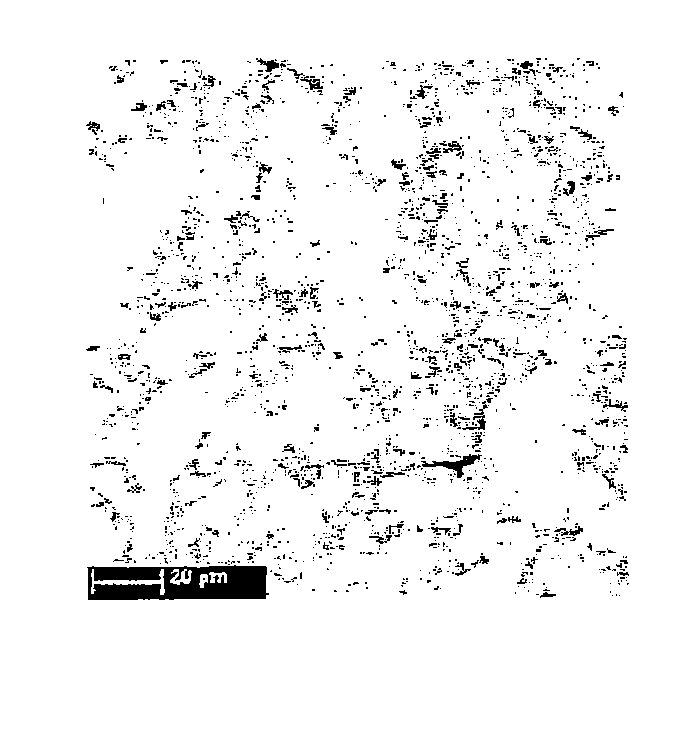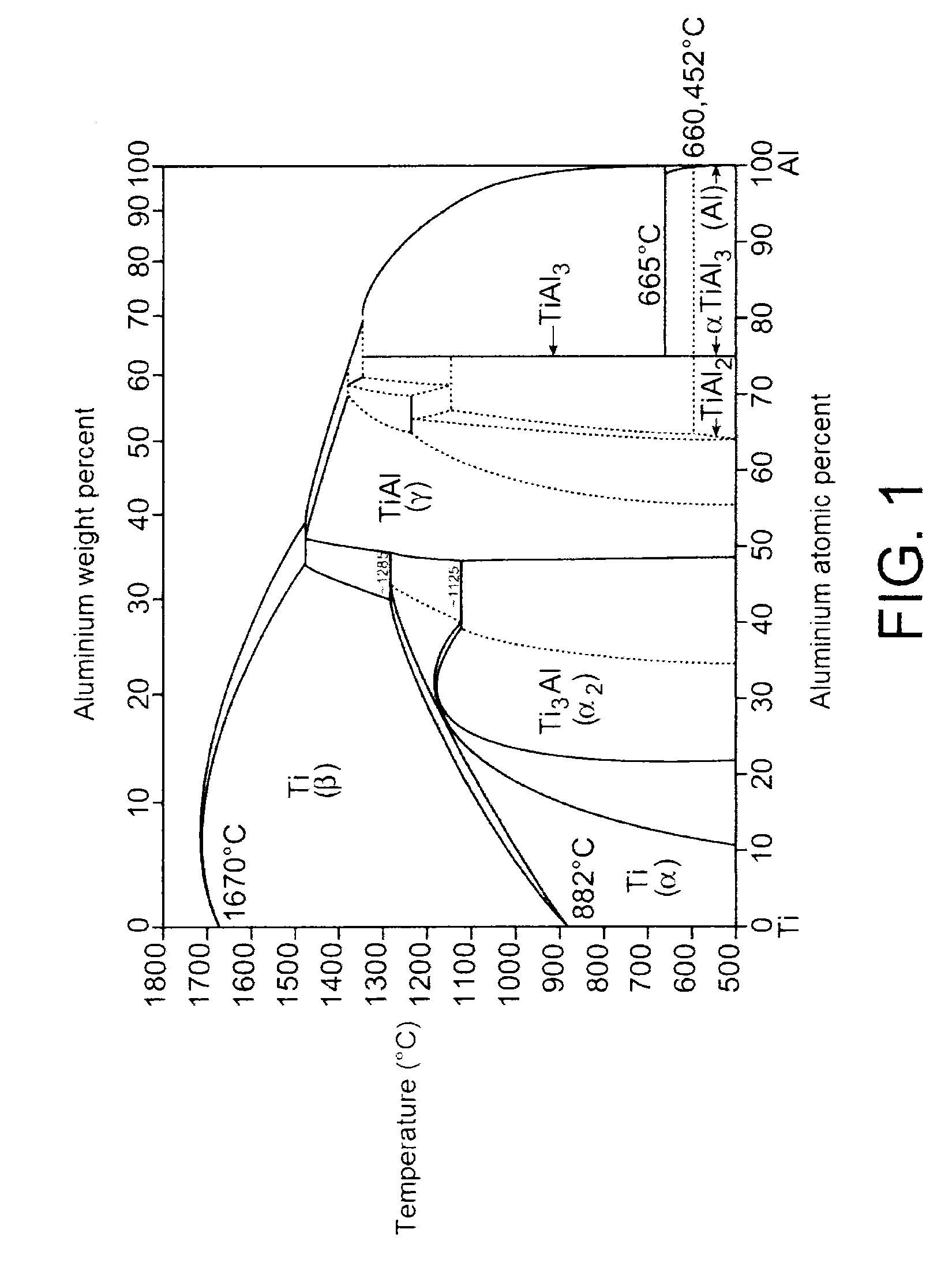Method for producing an al/tic nanocomposite material
- Summary
- Abstract
- Description
- Claims
- Application Information
AI Technical Summary
Benefits of technology
Problems solved by technology
Method used
Image
Examples
Embodiment Construction
[0052]In order to illustrate the process object of the invention, the steps to follow for making an Al / TiC nanocomposite material will now be described in detail.
[0053]According to the invention, the nanocomposite material is obtained according to the following reaction:
Al3Ti(s)+C(s)→TiC(s)+3 Al(l)
[0054]This reaction corresponds to the reaction (5) as mentioned by Nukami and Flemings in document [1]. The reaction (4) as mentioned in this document allows, in theory, to achieve an Al / TiC composite too.
[0055]Thermodynamic calculations show that the reaction (4) is easily made from 777° C. (1,050 K), whereas the reaction (5) is possible irrespective of the temperature.
[0056]Therefore, it appears that the Al / TiC composite can be manufactured in different ways according to different reaction pathways. It also appears that the reaction (5) could be quite feasible by high energy milling.
[0057]However, although milling can result in the nearly full formation of an Al / TiC composite according...
PUM
| Property | Measurement | Unit |
|---|---|---|
| Temperature | aaaaa | aaaaa |
| Temperature | aaaaa | aaaaa |
| Temperature | aaaaa | aaaaa |
Abstract
Description
Claims
Application Information
 Login to View More
Login to View More - R&D
- Intellectual Property
- Life Sciences
- Materials
- Tech Scout
- Unparalleled Data Quality
- Higher Quality Content
- 60% Fewer Hallucinations
Browse by: Latest US Patents, China's latest patents, Technical Efficacy Thesaurus, Application Domain, Technology Topic, Popular Technical Reports.
© 2025 PatSnap. All rights reserved.Legal|Privacy policy|Modern Slavery Act Transparency Statement|Sitemap|About US| Contact US: help@patsnap.com



